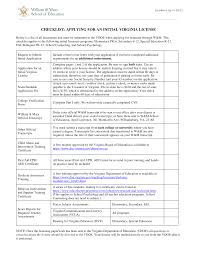
Your children can learn basic shapes knowledge by playing shapes games. Understanding shapes and learning about their properties is a great way to help children build a foundation for maths lessons. Shape games can also help children learn to identify and name shapes in an engaging way.
Shapes can be used by children to teach them how to identify and describe shapes in various sizes and orientations. They can also be used to help children learn about shapes in unfamiliar settings. For example, games like Shapes Falling Down can help kids practice learning about shapes that have been turned upside down.
Shape Monsters is another interactive game that teaches shape recognition. This game will help kids recognize and name shapes, as well as develop spatial awareness. Before moving their finger to make it drop, kids must select the correct shape. They will also receive an audible prompt when they select the right shape.

It's a great way for children to practice their drawing skills. They can draw on a whiteboard or on real objects. Once they are done, they can slice the shapes so that they fit into a grid. This will allow them to practice the art of calculating angles. They will also learn how to use an area formula. They will be notified if they make a mistake and they can "Try It Again". If they don't make mistakes, they will accumulate points.
It is the colorful and engaging shapes games that make them the best. These games can be used by both preschoolers and kindergarteners. These shape games will give kids a solid foundation to build upon in their geometry lessons. This will also help them to develop their maths skills and increase their confidence.
You can play many online shape games for kids. The most popular ones are Shape Runner, Shape Tunnel, Color Trouble, and Slice Shapes. These games will help your kids recognize and name basic shapes, as well as teach them about symmetry, tessellating patterns, and co-ordinates. They will also learn about faces and faces with angles. The use of shapes games will help children develop their geometry skills in an early stage. They will learn about the properties and be able identify shapes in everyday objects.
In addition to shape games, there are also shape sorting games. These games will enable kids to name and identify the shapes made by classmates. They will also learn to sort shapes based on two criteria: shape and color. Students can also experiment with other ways to sort shapes, like by cutting them into pieces. Students will also learn about shapes' properties, such as their area and perimeter.

Some shape games are not interactive. These are games that you can draw on paper using scissors or tape. These games can be used to help children practice drawing shapes. This is an important part in learning geometry and maths. They can help children understand the shapes around them, like the shapes in their classroom.
FAQ
What is an alternate school?
An alternative school is designed to give students with learning problems access to education, by supporting them with qualified teachers who understand their unique needs.
Alternative schools provide special education opportunities for children with special needs.
Additional support is available if needed.
An alternative school isn't only for those who have been expelled from mainstream schools.
They are accessible to all children, regardless if they have disabilities or abilities.
How can I get scholarships?
Scholarships are grants awarded to help pay for college expenses. There are many types and types of scholarships. These are:
-
Federal Grants
-
State Grants
-
Student Loans
-
Work Study Programs
-
Financial Aid
Federal grants are direct from the U.S. government. Federal grants usually require applicants to meet specific requirements. You will need to prove financial need.
Individual states can offer grants to state governments. Some states offer state grants based only on financial need. Other states award money for specific reasons.
Banks and lending institutions offer student loans. Students usually borrow money to cover tuition and living costs.
Work-study programs encourage employers to hire qualified student workers. Employers must pay workers at least minimum wage.
Financial aid allows low-income families to afford college by paying for all or part of their tuition costs.
What is a vocational school?
Vocational school programs are designed to prepare individuals for specific jobs. They can also offer training in specific skills and general education.
Vocational education is an essential part of our society as it helps young people acquire the skills necessary to succeed in their lives. It ensures all students have access high-quality learning opportunities.
Vocational schools offer a variety of options for students, such as apprenticeships, certificates and diplomas, degrees, college transfers programs, and other postsecondary credentials. Vocational schools teach academic and practical subjects, such as math, science, English, social studies, art, music, physical education, computer technology, business, health care, and others.
What is the difference in a university and college?
A university is an academic institution providing higher education. It offers undergraduate and postgraduate courses in various fields.
A college is typically smaller and less well-known than a university. Although it may offer fewer courses, colleges often have their own specialist departments.
Statistics
- “Children of homeowners are 116% more likely to graduate from college than children of renters of the same age, race, and income. (habitatbroward.org)
- They are more likely to graduate high school (25%) and finish college (116%). (habitatbroward.org)
- Think of the rhetorical power of nineteenth-century abolitionist Harriet Beecher Stowe, Martin Luther King, Jr., or Occupy Wall Street activists with their rallying cry of “we are the 99 percent.” (bostonreview.net)
- Data from the Department of Education reveal that, among 2008 college graduates, 92.8 percent of humanities majors have voted at least once since finishing school. (bostonreview.net)
- In most developed countries, a high proportion of the population (up to 50%) now enters higher education at some time in their lives. (en.wikipedia.org)
External Links
How To
What can I do to become a teacher in my area?
Teacher jobs are available at public elementary schools, private elementary school, private middle schools. Public secondary schools, public secondary secondary schools. Private secondary schools. Charter schools. Public and private Catholic schools. Public and private daycare centers.
A bachelor's degree is required to become a teacher.
-
A four-year university or college
-
An associate's degree program
-
Some community college programs are two-years long
-
Combinations of these three types programs
Candidates must fulfill state requirements to be eligible for teaching certification. These requirements include passing standardized tests, and completing a probationary phase of work experience.
The Praxis II test is required by most states. This test measures the candidate's knowledge of reading, writing, mathematics, and language arts.
Many states require that candidates obtain a specialized license in order to be certified to teach.
These licenses can be issued by the state's boards of education.
Some states grant licenses automatically without additional testing. To determine if your state has granted licenses without additional testing, you should contact the board in your state.
Some states won't issue licenses to applicants without a masters degree.
Other states allow individuals to apply directly to the state board of education for licensure.
Licenses vary widely in terms of cost, duration, and required coursework.
One example is that some states only require high school diplomas, while others require bachelor's degrees.
Some states require training on specific topics, such literacy or child development.
Some states require candidates to have a master's degree in order to become licensed.
When applying for certification, many states ask prospective teachers about previous employment.
It is possible to mention other professions in your application.
Regardless of your previous experience, most states will still accept you regardless.
You might want to list your job title, previous position, and years of experience.
Potential employers will find this information helpful.
It shows them you have relevant skills.
While working, you may have learned new skills and acquired valuable work experience.
Your resume can show this to future employers.